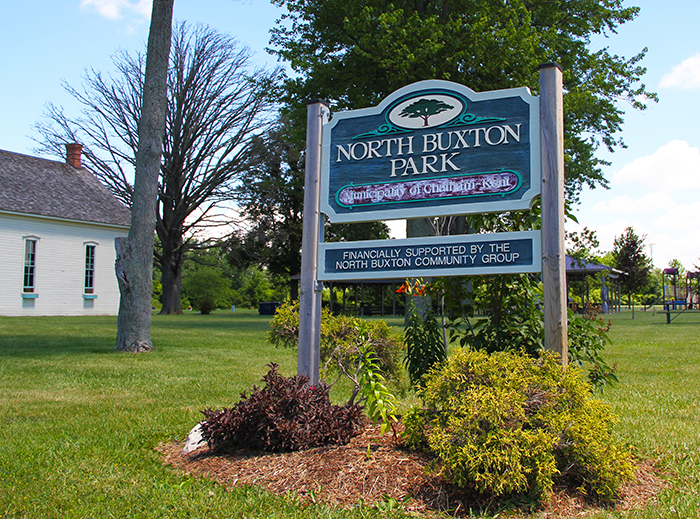
Ontario Heritage Trust replacing out-dated historical plaques around the province
By Pam Wright
Local Journalism Initiative Reporter
Ontario Heritage Trust (OHT) officials know that words matter.
That’s why the provincial agency is replacing historical plaques that display out-dated and inappropriate language and information.
The plaque at Chatham-Kent’s Buxton Settlement is among one of the first in Ontario to be reworked.
Erin Semande, manager of public education and community development for OHT, said an ongoing program to review historical plaques was initiated in 2014.
Ensuring that the plaques accurately reflect history is important, Semande said.
“We know these plaques are highly visible and many are landmarks in their communities,” she said, adding they’re designed to “educate, raise awareness and spark interest.”
Some of the information may now be flawed, Semande noted, because the understanding of the province’s history has “broadened over time.
“We want to make sure we take our social responsibility seriously and to share accurate, authentic and honest portrayals of Ontario’s history,” she said.
Buxton Museum and Historical Site curator Shannon Prince said the new Buxton plaque corrects “verbiage” from another time period. Prince said more extensive historical research also means the plaque has been “corrected and updated.”
Through the new plaques, Semande said the trust also wants to direct people to websites and digital archives where they can delve into history and “find out there’s more to the story.”
A lot of the province’s existing 1,285 plaques are old, dating as far back as 1955. The Buxton Settlement plaque was installed in 1965.
The four plaques that have been redone – including Buxtons’ – deal with Black history. The revised plaques take out the word “negro” along with other out-dated terminology.
“We can fit more information on the new plaques,” Semande explained, and “re-centre the Black experience and Black history.”
Prominent historians Natasha Henry and Adrienne Shadd were engaged by the OHT to develop new research and provide a more in-depth and inclusive interpretation of historical events, allowing the voices of Black history to shine through.
The new plaques were unveiled at a ceremony in Toronto April 28. A special ceremony to reveal the Buxton Settlement plaque is expected to take place in June.
The three other revised plaques include: The Wilberforce Settlement near Lucan, The Solomon Moseby Affair 1837 at Niagara-on-the-Lake, and the Niagara Baptist Church Burial Ground plaque.
Historians estimate that 25,000 to 30,000 Black African Americans fled to Canada to escape slavery in the United States, with most settling in Ontario, then referred to as Upper Canada.






